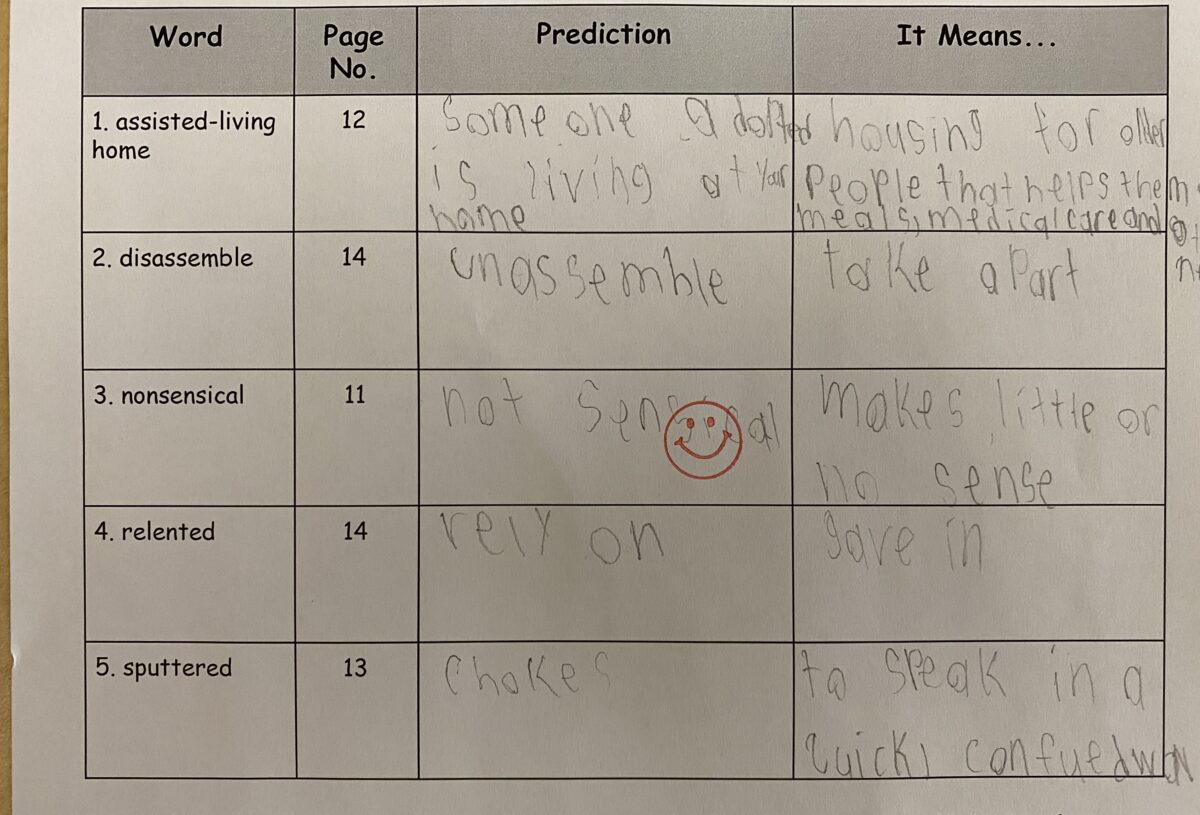Today I was reading a text with my students and wanted to preview some of the vocabulary. I decided to use a graphic organizer with a “Prediction” and a “It Means…” column. Students would make predictions about the meaning of each word, and then we would talk about the actual meaning.
Before students started, we had a conversation about the importance of trying to make your best guess based on what is known about the word, or its parts, but that it was okay for your prediction to be incorrect. We also talked about strategies that would help predict what the word might mean – word parts, hearing the word used before, etc.
After the three minutes I gave students to make predictions, we whipped around the room and listened to a few predictions for each word. We talked about how students got the prediction and then shared the meaning of the word. Students added the meaning to their “It Means…” column. What was really valuable was the conversation that happened after students made the prediction.
One of the words was disassemble. A student said his prediction was, “take apart.” I asked him if he’d ever seen this word before and he said no. He said, “I knew if you assemble something you put it together – like ‘some assembly required’ on commercials. So, I guessed the dis- meant to do the opposite, so I guessed that dis… assemble meant the opposite, take apart.” He even added the pause between the dis- and assemble. I couldn’t have asked for a better response, and part of me wanted to let him finish teaching the lesson.
This was a very simple way to preview the vocabulary. Students were engaged because they wanted to see if their predictions were right, and the rich conversation made the time spent extremely valuable.
As I said, these words were preselected, but choosing which words to teach is critical. We can’t teach all the word which might be unknown to students. So, how do we know which words to teach? Isabel Beck, Margaret McKeown, and Linda Kucan broke vocabulary words into a 3-tier system:
- Tier One – Words used everyday which require little instruction (building, car, parking lot)
- Tier Two – Words are high frequency academic language used across domains (formulate, analyze, specify)
- Tier Three – Words specific to a field of study (denominator, insulator, legislature)
The biggest impact comes from teaching the Tier Two words because they are used across content areas, but we also need to teach the Tier Three words within units of study. Teaching prefixes and suffixes also has an enormous impact because knowing one prefix or suffix can unlock so many words. For example, our discussion of dis- meaning “not” or “opposite of” lead to a conversation about other words with the same prefix – disapprove, dissatisfied, etc.
After you’ve chosen the best words to teach, you need to determine the best way to teach them. One strategy in Robert Marzano’s Vocabulary for the Common Core is Six-Step Process for Vocabulary Instruction:
- Provide a description, explanation, or example of the new term.
- Ask students to restate the description, explanation, or example in their own words.
- Ask students to construct a picture, symbol, or graphic representing the term or phrase.
- Engage students in activities that help them add to their knowledge of the terms in their vocabulary notebooks.
- Periodically ask students to discuss the terms with one another.
- Involve students in games that allow them to play with terms.
There are tons of resources out there with ideas for vocabulary activities. What are some of the strategies that you use in your classroom?
